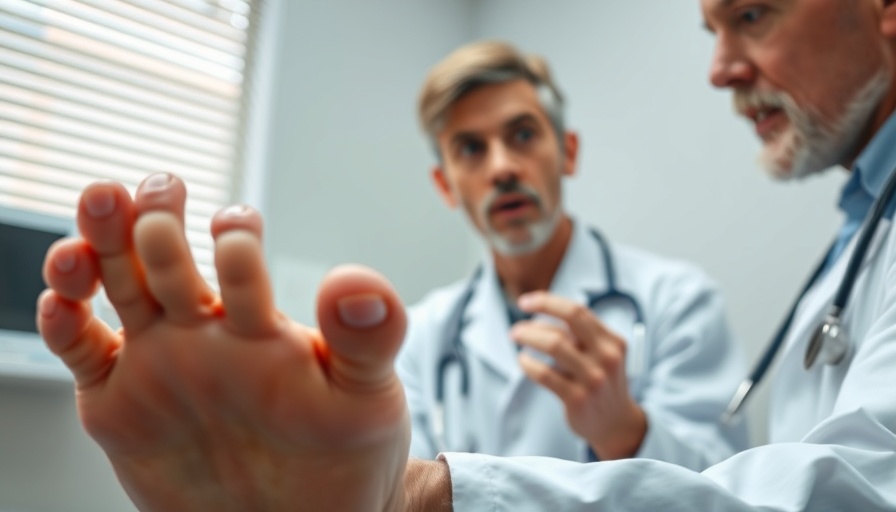
Understanding Olmstead Syndrome: A Rare Condition
Imagine living with a condition that makes every step excruciating. This is the reality for individuals diagnosed with Olmstead syndrome, also known as mutilating palmoplantar keratoderma. Characterized by abnormal thickening of the skin on the palms of the hands and the soles of the feet, this rare genetic disorder affects a mere 73 recorded cases since its first description in the medical literature in 1927.
In 'Masses Won't Stop Growing! Doctor Reacts to MY FEET ARE KILLING ME!', the discussion dives into the complexities of Olmstead syndrome, exploring key insights that sparked deeper analysis on our end.
The Genetics Behind Olmstead Syndrome
Olmstead syndrome results from mutations in genes responsible for producing keratin, a fibrous protein that provides strength and resilience to the outer layer of skin. These mutations can lead to an overgrowth of keratin, creating painful, thick patches that can disrupt normal movement. Though most cases are spontaneous with no discernible family history, some inherited variants do exist.
The Painful Reality of Daily Life
For those living with Olmstead syndrome, the consequences are more than cosmetic; the excessive keratin build-up can cause significant discomfort. Many find themselves limited in mobility, and activities as basic as walking can feel like walking on rocks. The burden of this chronic pain shapes not just physical health but also emotional well-being.
Treatment Approaches: Can They Bring Relief?
Currently, there is no definitive cure for Olmstead syndrome. Treatment typically focuses on managing symptoms and improving quality of life. Recent discussions highlight innovative techniques, such as skin grafting, which can help manage the severe keratosis. However, the challenge remains that even after surgical interventions, the likelihood of the keratin growth returning is high.
Innovative Solutions on the Horizon
One promising avenue involves using skin grafts to cover the affected areas and possibly prevent further keratin production. The process of treating Olmstead syndrome can be intricate, as maintaining the integrity of fragile skin grafts is essential. While these procedures can be effective, they require ongoing monitoring and care to ensure optimal results and to address any recurring growth.
Community Insights: Living with Olmstead Syndrome
Living with Olmstead syndrome often involves a tight-knit community where experiences and strategies for coping and treatment are shared. Support networks provide both emotional and practical assistance, reminding sufferers that they are not alone in their struggle. Stories of resilience and adaptation can inspire others facing similar challenges, emphasizing the importance of community.
Addressing Common Misconceptions
Despite its rarity, misinformation surrounding Olmstead syndrome can lead to misunderstandings. For instance, many people may confuse it with other skin conditions, underestimating its severity. Clarifying these myths is vital for proper awareness, diagnosis, and treatment. Increased understanding can foster better support not merely from medical professionals but within communities as well.
The Path Forward: More Research and Awareness
To better understand and treat Olmstead syndrome, ongoing medical research is crucial. The more healthcare providers are aware of such rare conditions, the better equipped they will be to support patients effectively. Furthermore, increased awareness can lead to improved diagnostic methods and treatment options, ultimately enhancing the quality of life for those affected.
As we advance in the field of skin disorders and genetic research, let us continue to share knowledge and develop innovative solutions to alleviate the burdens caused by such rare conditions.
 Add Row
Add Row  Add
Add 




Write A Comment